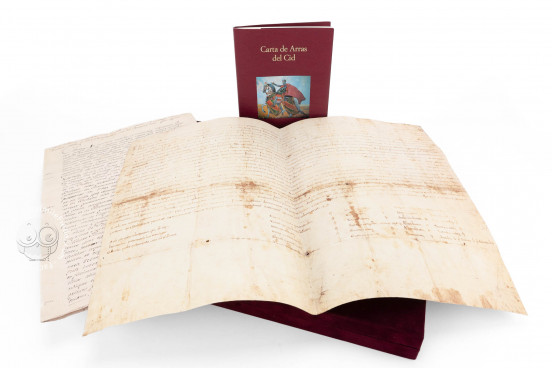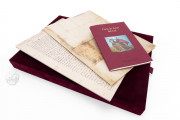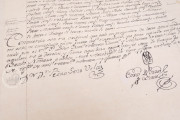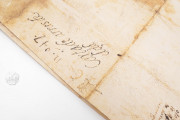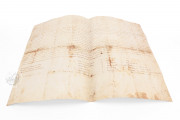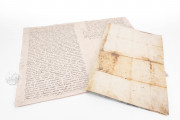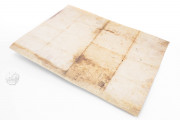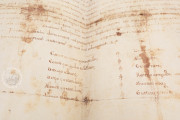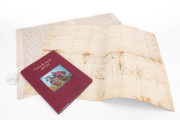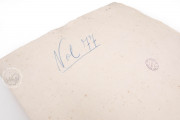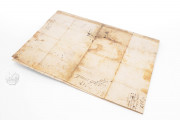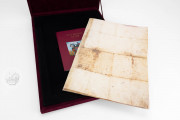It is exhibited in a medieval large chest which has been part for centuries of the legend of the Cid, in the chapel of Corpus Christi in the cathedral of Burgos, like if it was one of those two chests “cubiertas de guadalmeçí e bien enclaveadas, los guadameçís vermejos e los clavos bien dorados” which pretended to keep the treasures of the Cid, but they only contained sand. According to the Poema del Mío Cid, they were used as a lure for the moneylenders Raquel and Vidas who helped Don Rodrigo with six hundred silver marks, in time for him to start the way of the exile.
The legend of El Cid becomes reality
There is little doubt that in this large chest, prepared to keep documents, was preserved the scroll “kartula donacionis vel profiliacionis” which, the 19th July 1074, the spouses Don Rodrigo and Doña Jimena gave to each other a dowry. That explains how it came to be that, as the time went by, the aforementioned chest was called the Cofre del Cid (Chest of the Cid).
It is not possible to determine how, when and why this Carta de Arras arrived to the archive of the cathedral, which, by the way, does not mention any clergyman or priest among their signatories. It can be ventured the hypothesis that it happened when Doña Jimena, who outlived her husband fourteen years, died.
According to the Carta de Arras, the mentioned possessions should come into her daughters. However, María, the youngest, who was married to Ramón Berenguer III, Count of Barcelona, had died leaving in Barcelona two granddaughters: María and Jimena.
Regarding Cristina, she was married to prince Ramiro Sánchez and lived in Navarra. All of them were and will be far from Castile. It is natural that the possessions were sold. If the purchaser of some of them was the Cathedral Chapter, as it seems to be, the Carta de Arras was equivalent to a property deed, which was jealously kept by the canons.
In 1596, Fray Martín de la Haya completed the works of the rooms where the archives of the cathedral were moved to from the chapel of Santa Catalina. In the same year, Juan Ruiz de Ulívarri aired “the piece of news” that among those archives was that documental Cid work of art. Since then, the text of the Carta de Arras del Cid has been published on countless occasions, with better or worse transcriptions of the Barbarian Latin, and sometimes translated to Spanish.
We have 1 facsimile edition of the manuscript "Pledge Letter of El Cid": Carta de Arras de El Cid facsimile edition, published by Siloé, arte y bibliofilia, 1999
Request Info / Price
